This comprehensive guide to the brain development of children from 0 to 6 years is packed with insightful tips and important facts every parent should know.
In this article
While the field of neuroscience is still growing rapidly, we already have a lot of good information that can help us understand our children’s early brain development. This article provides an overview of information that parents may find useful in understanding and raising their young children.
If you’ve read some of our other articles, you probably already know that we at ADAM and Mila believe strongly in the power of knowledge to allow parents to better aid their children in their development. We work hard to provide a lot of great information for parents on baby developmental milestones as well as activities for babies and activities for toddlers.
As such, the development of a child’s brain is of particular interest to us, since an astonishing amount of human brain development takes place during a short period of time during child development. These early years are a critical period in your human development and specifically your child’s development as your child learns an incredible number of skills and amount of information that they’ll need to function throughout the rest of their lives.
In this particular article, we’d like to give you an easy-to-understand guide to your child’s growing brain, as well as helpful tips to support their development. This article will include a lot of brain science, but if you’re willing to learn with us we’re sure you’ll discover useful information and be awestruck by your little wonder all over again.

What Is the Brain and How Does It Work?
Before we dive into your child’s developing brain, it will be useful to have a working vocabulary and rudimentary understanding of the inner workings of the human brain. While this is by no means a comprehensive explanation, it works well for our purposes and will give you context for many of the things we’ll be talking about later on. We have provided links throughout this section in case you’d like to learn more about the brain.
Neuroscience not your thing? Click here to SKIP THE NERDY DETAILS
Brain Science Vocabulary
Developmental cognitive neuroscience is a field of science that combines neurology and psychology to better understand how the physical brain affects the mind and vice versa.
Neurons are what people are usually talking about when they say “brain cells”, and are the main components of your brain and spinal cord. They transmit messages to and from the brain via electrical signals across structures called synapses, which connect one neuron’s “head” to another neuron’s “tail.”
Axons form a neuron’s tail.
Myelination or myelinogenesis is a process that covers axons in a fatty substance called Myelin so that signals will travel faster through the neuron.
The nervous system is comprised of the brain and the spinal cord (the central nervous system), and nerves (the peripheral nervous system). Nerves receive input from the body through the senses (For example: “that object is sharp”) which is communicated to the brain through the spinal cord. The brain then sends a response to the affected area (For example: “pull your hand away”). This exchange takes place almost instantaneously.
Brain Structure Vocabulary
The spinal cord is a long string of nervous tissue that extends down your spine (vertebrae) and ends at the small of your back, before your actual spine’s end. It is the pathway that sends sensory information to the brain and motor (movement) information from the brain. It also helps coordinate many reflexes.
The brainstem is the part of the brain that connects to the spinal cord and relays messages from the brain to the rest of the body. It controls our most basic functions such as breathing, and is believed to be the most ancient part of our brains. It contains the medulla and pons.
The cerebellum is located at the back of the brain. It’s a small portion of your brain sitting just above and behind the brainstem, and is best known for its role in motor control. In Latin, “cerebellum” translates to “little brain.”
The cerebrum is the largest part of the brain, and is composed of the cerebral cortex, which includes two cerebral hemispheres (sometimes referred to as the “right brain” and “left brain”) connected by the corpus callosum. Each hemisphere is divided into four lobes: the frontal lobe, the parietal lobe, the occipital lobe, and the temporal lobe. There are also several structures underneath the cortex that are usually included in the cerebrum. While other parts of your brain control involuntary functions, your cerebrum is responsible for all voluntary functions. When you solve a math problem, remember someone’s name, or shake someone’s hand, this is the part of the brain you are using. Movement, memory, sensory processing, and language are all controlled by the cerebrum.
The prefrontal cortex is the very forward part of the frontal lobe of the cerebral cortex. It’s believed that this is where a lot of really complex stuff happens- including executive functions and personality.
The thalamus is located in the center of the brain and sends sensory and motor information to the brain as well as controlling sleep and alertness.
The hippocampus is found underneath the cerebral cortex and processes information from long- and short-term memory and is the part of the brain that controls spatial reasoning.
Gray matter is primarily made up of cell bodies (or neuron “heads”) and is where the synapses form.
White matter is primarily made up of myelinated axon “tails,” or nerve fibers. It carries signals through the brain and spinal cord.
How Do We Know What We Know?
Neuroscience uses a multitude of helpful tools to learn more about the human brain, how it functions, and how it develops. Two prominent tools are fMRI and the rat model of study.
fMRI or functional magnetic resonance imaging is what people are generally referring to when they say things like “brain scan.” MRI scanning is a noninvasive method of observing brain activity, and it helps scientists and doctors better understand what parts of the brain are involved in certain processes, and how disease affects this brain activity.
Rats are often used to study the effects of drugs and biotechnological tools on the brain, as well as studying the brain more generally. This is possible because rats brains are similar to human brains.
Brain Development During Pregnancy
It’s probably unsurprising that an impressive amount of brain development happens during pregnancy. After all, an impressive amount of development in general is taking place for that little embryo of yours. This development is the foundation of your baby’s intelligence for the rest of their lives. In this section, we’ll discuss how your baby’s brain grows during pregnancy, and what you can do to protect and support that growth.
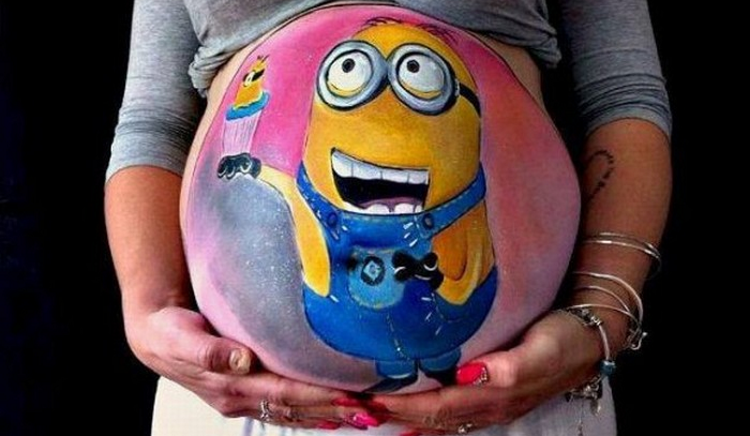
The Fetal Brain
The prenatal brain development starts at just over two weeks in, with the formation of the neural plate. The neural plate will curve into the neural tube, which will close and segment into four distinct sections. We call these the forebrain, the midbrain, the hindbrain, and the spinal cord. They are the predecessors to your little one’s wonderfully complex nervous system. This is all finished up by about the 7th week of pregnancy.
At just six weeks, your child begins to move, and this is just the beginning. Before the start of the second trimester, your child will be able to suck, swallow, “breathe,” stretch, and even suck their thumb!
The last part of your baby’s brain to mature before birth is the cerebral cortex, which is the part of the brain that controls voluntary actions. This part of the brain will still be relatively underdeveloped at birth, but it matures rapidly within the first few years of you child’s life.
What Can You Do to Help?
There are a few things you can do to help support your baby’s brain development, but it’s important to remember as long as you’re healthy, there’s not a whole lot you need to change to allow your child’s brain to grow normally. As always, it’s important that you consult your doctor with any questions about your health and the baby’s health, and to carefully consider their advice.
What to Avoid
You have probably heard time and time again to avoid drugs, smoking, and alcohol while you are pregnant, but there are a few other things you should consider cutting out too.
While telling an expectant mother not to stress might seem like a lot to ask, stress can have negative effects on your little one’s development in the womb. If nothing else, it’s a good excuse to take better care of yourself during this time and take time to relax when you need to.
You’ve also probably heard not to eat raw eggs or cold deli meat during pregnancy. This is because of the somewhat rare but real risk of developing salmonellosis and/or listeriosis. Both of these illnesses are rather mild for a strong, healthy adult, but can be devastating to a growing fetus. Also, washing your produce is particularly important during pregnancy to avoid consuming pesticides.
Diseases such as zika virus can interfere with brain development of a growing fetus. Take precautions by wearing bug spray when traveling and during the summer months. It’s a good idea to maintain good hygiene practices to avoid other common diseases.
Certain workplace hazards and materials can be harmful to your developing baby. Ask your doctor if you’re concerned about things like cleaning supplies, paints, or if you work in a lab, hair salon, or other place where you regularly handle potentially hazardous materials.
Any medications you take from painkillers to antidepressants should be discussed with your doctor to determine if they are safe.
How You Can Support Healthy Brain Development
The best way to keep your developing child healthy is to keep yourself healthy. This means making sure that you are well nourished and taking a daily prenatal vitamin that contains folic acid and DHA. As for what to eat during pregnancy, eating a wide variety of healthy fruits, vegetables, and proteins is sufficient. Make sure to keep your prenatal appointments so that your doctor can keep track of your health through things like ensuring that you are gaining weight appropriately.
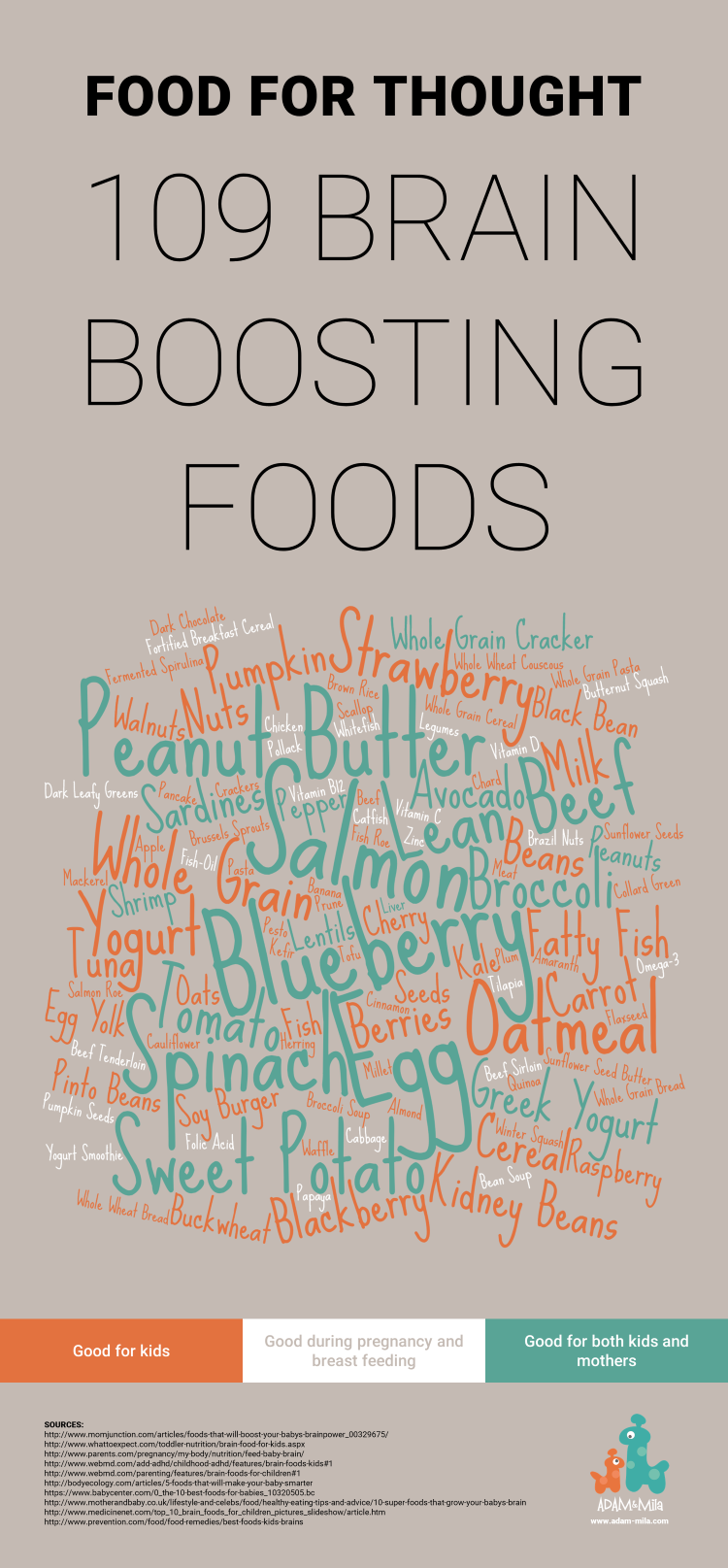
While there is no reliable research that confirms playing classical music for your baby makes them any smarter, some studies show that the fetus will react to music. So go ahead, sing to your baby, express your love and care for the baby, and engage their developing senses. However, don’t put headphones on your baby bump, as this may be too loud for their sensitive little ears and stress them out. Amniotic fluid actually conducts sound quite well, so they can hear the music you’re listening to on your radio.
Stages of Brain Development from Birth to 6 Years Old (and How You Can Help!)
While we are not able to offer an exact brain development timeline, we will do our best to give you an idea of the different stages of brain development during early childhood.
When your little one arrives, a lot of work and growth has already been done. However, there’s still a lot more growing to do. At birth, your child already has almost all of the neurons they’ll need for the rest of their lives, even though their brains are only 25% the size of an adult brain.
Because your baby is rapidly creating and pruning out synapses, this is a critical period for learning things.
You’re probably familiar with the “soft spot” on a baby’s head. These soft spots are called fontanelles, and they exist because your child’s skull is not fully fused at birth. This serves the dual purpose of helping the head fit through the birth canal and allowing room for the brain to grow quickly during early childhood. At just three years old, your child’s brain will be about 80% the size of an adult brain.
Early in your child’s life, they will start to form synapses at a faster rate than at any other time of life. They’re actually producing many more than they need, and not all of them will make it to adulthood. This allows them to learn things more quickly than adults do.
Anyone with kids knows that they come with their own personalities, but brain development can also be heavily influenced by external things. What we understand about nature vs. nurture is that the genes fuel this mass synapse formation, while the the environment fine tunes the brain and helps it make decisions about which pathways to keep and which to get rid of. The more often a synapse is used, or the more often a skill or idea is practiced or heard, the stronger that synapse gets. This means that things that are used often, like language, and walking, stay ingrained in a child’s brain, while things that are neglected disappear. This process also happens in adult’s brains, but at a much slower rate.
Because your baby is rapidly creating and pruning out synapses, this is a critical period for learning things. It also means that without practice, certain skills will disappear. If you want to create lasting skills in your child (like a second language) it’s imperative that their exposure and practice is constant. Children’s “flexible” brains provide a unique opportunity to create a solid foundation on which to build for the rest of their lives.
What’s Growing?
A lot is going on in that little head! Here are a few interesting things to know about your baby’s brain development right now.
Visual Cortex
At birth, your little one can’t see very well. Baby vision is fuzzy and they can only recognize a few colors. But through the first six months, cells in their brain will specialize to make up the visual cortex, neurons will lengthen and axons will become myelinated. Along with physical improvement in their eyes, they’ll be able to see things more clearly by three months. At six months, rapid improvement brings depth perception and focus to your little one’s repertoire, and they can see nearly as well as an adult.
While they can’t see a whole lot in the beginning, they recognize bright colors, interesting and dramatic patterns, and human faces during early brain development. Engage their developing sense of sight by looking into their eyes, making funny facial expressions, and exposing them to different objects and patterns.
Cerebellum
During baby’s first year, their cerebellum triples in size, allowing for rapid development of their motor skills. Your child will quickly progress from rolling over, to crawling, and then to taking their first steps. Encourage them to use their arms and legs while you play with them, and allow them the space and time to practice their new skills. For more information about these baby milestones, you can read more in our fine motor skills and gross motor skills articles, which include fine motor activities and gross motor activities.
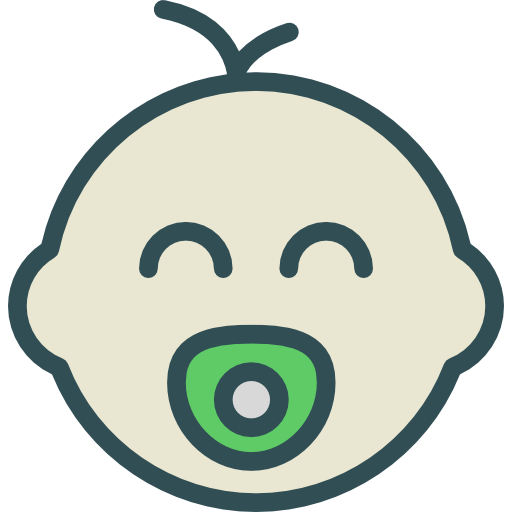 See our list of Tummy Time activities and developmental milestones
See our list of Tummy Time activities and developmental milestones
Myellination
Myelination of nerve cells allows for faster transfer of electrical signals, meaning baby’s brain can receive and transmit messages faster, and deal with multiple signals more effectively. Myelination is incomplete in many parts of the brain after birth, but rapidly develops during the first year of childhood. This explains why older children have an easier time processing and reacting to input than young infants, and can determine what kind of activities are age appropriate activities for infants.
How to Create an Enriched Environment for Brain Development
So now that we know how important environment is for your child’s early brain development, we can discuss how to promote optimal brain development through environment. Here are a few things you can do to help encourage good brain development in your little one.
Social Interaction
Humans are social creatures, so it’s not surprising that social behavior has a profound effect on our brains and is important to child development. Social activities where a child is actively engaged by their parents or other children help encourage healthy brain development and social skills and are one of the most effective ways your little one learns. Talking to your little one directly not only encourages growth in the language center of their brain, but it also helps them become a better learner through making and strengthening connections in their brains.
 Learn about how your baby acquire new vocabulary
Learn about how your baby acquire new vocabulary
Pre-Kindergarten Programs
Whether or not to enroll children in a pre-kindergarten program (also known as Pre-K or sometimes even PK) is a tough decision for many parents. While it’s a very personal choice and there are many factors that go into the decision, research compiled by Urban Child Institute shows that children enrolled in pre-kindergarten class have improved cognitive skills, decreased risk of developmental delays, and improved kindergarten readiness.
Diet
Although the brain’s relationship with food is complex, it is clear that proper nutrition during early childhood is an important part of proper brain development. Our brains require immense amounts of energy and nutrients in order to develop and run properly, and at no time is this more important than during the rapid development period of early childhood. A diverse, healthy diet full of things like irons, proteins, vitamins and minerals helps leave lasting effects on your child’s brain.
Proper nutrition during early childhood is an important part of proper brain development.
If your newborn baby is being breastfed, you’ll want to use a vitamin D supplement to avoid vitamin D insufficiency. This is because breastmilk does not contain adequate concentrations of this vitamin and because babies usually experience a lack of sunshine in their early life. Try to maintain proper nutrition while breastfeeding, slightly inadequate nutrition will likely affect you more than your baby, your body is prioritizing the nutrition content of your milk. Some great foods to serve your toddler to help provide them with baby brain building blocks are eggs (for protein), leafy greens (for vitamins), and fish (for Omega-3 fatty acids).
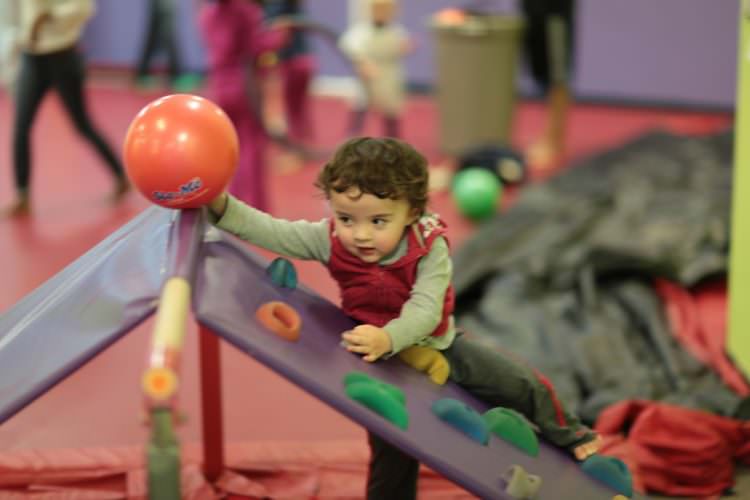
Physical Activity
The health of the brain is tied to the health of the rest of the body, and vice versa. Studies suggest that exercise in early childhood can improve cognitive function and even contribute to a bigger hippocampus. You can exercise with baby from a young age with activities like tummy time, which also help him develop muscle strength in his stomach and neck muscles and improve head control. You can encourage a more active lifestyle in children by getting them involved in sports and other play activities that they’ll enjoy. Fun summer activities and fun outdoor activities are great places to start.
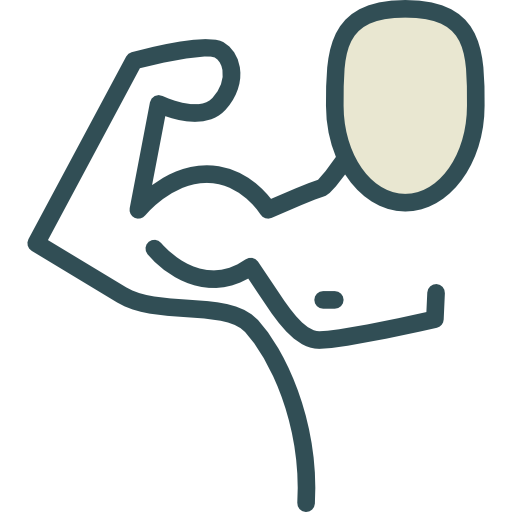 Read our guide to Gross Motor Development of Babies and Toddlers
Read our guide to Gross Motor Development of Babies and Toddlers
Novel Experiences
A creative environment where children are exposed to a variety of new ideas, objects, and experiences helps them develop healthy, curious baby brains. In animal studies, the effect of a more experience rich environment was most prominent when the subjects were exposed earlier in life. Interactive experiences that are appropriate for a child’s age are most effective and enriching.
Avoiding Toxic Stress and Developing Positive Relationships
Toxic stress constantly triggers the stress response in a child. Stress, is a natural part of our biology that allows us to respond quickly to potential dangers, but when the stress response is engaged constantly, it starts to damage the mind and body. Toxic early life stress is triggered by things like family poverty, exposure to violence and neglect and can become truly toxic when the child does not have recourse and strong, comforting family bonds.
Development of Logical Reasoning
During early childhood, your child will make decisions using incomplete or incorrect logic and reasoning. This is part of normal early childhood development. Proper instruction and encouragement from authority figures, such as parents and teachers, will help them overcome their initially simplistic view of the world around them. School and various preschool activities will help a lot with this development, but there are also plenty of activities you can do with your child to help them learn!
Counting
Your child will have a hard time understanding that appearances don’t always tell the whole story. If a pile of things looks bigger, they will assume there are more objects in that pile even if the number is the same. Help them understand by counting the objects in each group. This will take some time to learn, so don’t be surprised if your child still doesn’t believe you. This sort of brain exercise and learning activity for toddlers is typically helpful for children three years and older.
Noticing Similarities and Differences
Helping your child recognize patterns by engaging them in great activities like matching and “spot the difference” games are valuable to their cognitive development.
 Check out our Sorting & Matching Activities!
Check out our Sorting & Matching Activities!
Sensory Activity
Hands-on activity and sensory play are a great way to get your little one’s brain working. As your baby’s brain gets better at sending and receiving information, they’re fine tuning the use of their senses to learn more about the world. Encourage this exploration by engaging their senses with interesting textures, colors, music, and foods. Provide a diversity of sensory experiences and encouraging sensory exploration at this time. A sensory table or sensory bin can be fun options for this type of play. Sensory integration will be vital to their ability to respond effectively and appropriately to outside stimuli.
Teach Children to Ask Questions
The scientific method is a powerful tool of discovery used by scientists to parse out complex new ideas. It’s also simple enough to teach to your growing child. While your child will try experimenting and asking “Why?” on their own, helping them learn to ask the right questions and predict the answers will be a valuable skill for them to learn. When your children are curious about something, encourage them to form a testable hypothesis about it, and follow through.
Encourage Children to Participate in Simple Everyday Problem Solving
When you go to the zoo on the day it happens to be closed, allow your children to participate in the problem solving process. “We can’t go to the zoo today. What should we do instead?” Encourage them to consider alternatives.
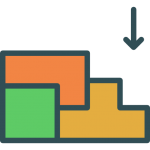 Read our guide to the 12 Problem Solving Milestones for Babies and Toddlers
Read our guide to the 12 Problem Solving Milestones for Babies and Toddlers
Memory Development
While childhood amnesia makes it impossible to recall most of our autobiographical memories from before we were six, this doesn’t mean that the memories we make before this point are unimportant. Children are still able to form stable memories and they shape the way they interact with and learn about the world. Remembering things is also an important skill that takes time, development, and practice.
The Different Types of Memory
Explicit memory, also called declarative memory, is often broken down into semantic memory (recollection of facts) and episodic memory (recollection of experiences), but it is ultimately the kind of memory that you consciously access. This is the first kind of memory that children start to exhibit in the first three years of child life, and may even be present in newborns.
Short-term memory is memory stored within seconds (approximately 15-30 seconds) of it entering the brain. It does not include information processing that puts these memories to use.
Working memory is a lot like a computer’s RAM. This is because it is memory that is stored in the short term and used to make decisions and operate in the moment. This type of memory is critical to behavior regulation and problem solving. Toddlers have about half the working memory capacity as adults, but it will improve with age and practice.
Long-term memory is memory stored indefinitely.
Autobiographical memory is a type of explicit memory where semantic and episodic memory are combined to create “episodes” from a person’s life in their recollection.
Your baby’s memory starts relatively fuzzy, and it grows slowly over their early childhood. There is some indication that babies show preference for their mother’s voice shortly after birth, and babies as young as six months are able to learn and remember cause and effect relationships.
Knowing what kind of memory capabilities your child possesses can be useful in managing expectations of them as well as knowing how best to teach them. For example, as late as age 7 children still have trouble remembering complex memories that involve overlapping elements such as time and place. This makes it difficult for them to remember things that change based on their context, time, or location.
Your child’s ability to remember things will be important throughout their lives. As they grow, it will allow them to plan, make goals, and use previously held information or experiences to make decisions and create new ideas. This makes it an incredibly important tool in the toolkit of cognitive development.
While you won’t really be able to speed up the process of developing memory, there are some things you can do to support them, as well as memory strategies you can teach them to help improve memory. A few of these strategies are listed below:
- Ask your child to tell a story – There’s a reason storytelling is such a big part of just about every human culture. Storytelling is a powerful tool of self discovery, communication, and yes, memory. Stories survive in our memory far longer than individual facts, so if you want to help your child remember things better, ask them to tell you a story about things that have happened to them.
- Repetition – Your child is practicing their limited memory capabilities. Repetition is a simple way for them to strengthen connections in their brain and memorize interesting stories or important information.
- Associations, connections, and acronyms – As your child becomes more self-aware regarding their own memory and cognition, they will be able to use more complicated memory strategies to make learning easier. One such strategy is using associations, connections, and acronyms to make an idea more memorable. This can include drawing pictures that contain imagery representative of an idea, creating an easy-to-remember acronym, or associating mundane ideas with more exciting ones.
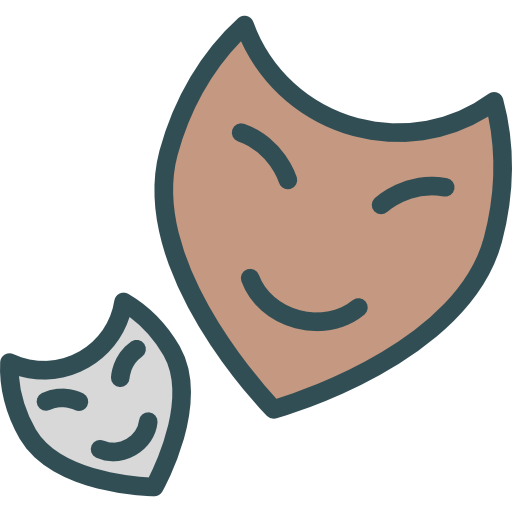 Support your toddler’s storytelling skills with some fun activities
Support your toddler’s storytelling skills with some fun activities
Emotional Development
Have you ever heard the terms “emotional maturity” or “emotional intelligence?” Though not something we often think about in terms of intelligence, emotional intelligence is an important part of being a well-adjusted member of society.
If a child doesn’t have the emotional intelligence to understand what they’re being rewarded or punished for, then the reward or punishment will not have the desired effect.
Your child will already react to your emotions shortly after birth, but there’s still a long way they have to go in their social and emotional development. The foundation of such intelligence is empathy, or the ability to understand the way that someone else feels. You can encourage baby’s development of this incredibly important characteristic by demonstrating it in your baby’s environment by creating a loving atmosphere in your home and by encouraging them to treat others the way they’d like to be treated.
Other important elements of emotional intelligence that stem from empathy are intrapersonal intelligence, or a sense of self, of your emotions, and of your strengths and weaknesses, and interpersonal intelligence, or the ability to understand others’ desires and motivations. The former is an important skill for introspection and self improvement, while the latter sets your child up to be a good leader, team player, and friend.
The development of emotional intelligence presents an interesting conundrum about the way we reward and punish our children. If a child doesn’t have the emotional intelligence to understand what they’re being rewarded or punished for, then the reward or punishment will not have the desired effect. This is why it’s helpful to know how emotional intelligence develops in early childhood. Here are a few important stages your baby will go through:
2-3 Months
Your baby will start to smile socially, or in other words, they smile directly at you as a way of communication. They’ll also be crying in order to get your attention.
9-10 Months
The rapid improvement of short and long term memory along with the new connections between the frontal lobes and the emotional centers of the brain mean that around nine months your child will start to experience separation anxiety and a fear of strangers. They’ll start to show more dramatic preference for their primary caretakers at this time.
18 Months-2 Years
Children in this age group will begin to show that they understand the concepts of right and wrong. The growth of the frontal lobe as well as the rapid improvement of language gives children better context to explore their own emotions as well as relate to the emotions of others. This is the time that emotional skills such as empathy, interpersonal intelligence, and intrapersonal intelligence begin to develop.
3-4 Years
About this time, your child will begin to be more social with other children, and with your direction, they’ll learn to share their toys and take turns with other kids. A four year old will start to connect punishments with events that happened earlier in the day.
You can help your child grow emotionally and learn to manage emotions by teaching them to talk it out. Research suggests that even just being able to label emotions we are feeling helps us to slow down and prevent emotional outbursts. So whether it’s sadness, pain, disgust, anticipation or joy, encourage your child to practice naming their feelings.
Of course, emotional intelligence does not exist in isolation of other kinds of intelligence. Research shows that children that are emotionally competent also tend to perform better in school. As well, emotions can do a lot to influence how strongly we remember things. While math activities and science activities are important to success, activities that allow children to explore their emotions and sense of self are also important to their development.
Development of Language
Children’s speech and language development progresses quickly with impressively little assistance. This is such an interesting and strange phenomena, linguists theorize that babies may be born with grammatical “tools” and just need to be exposed to a language to put them to use. This could also explain why languages have similar features such as vowel sounds.
During the first year, it’s believed that your child’s brain becomes “wired” for their native language. This is the time that it’s most important that your child be exposed to as much language as possible. If you’re trying to teach your child more than one language, it’s important that you’re speaking that language in front of your child a lot during this time.
Early childhood literature like board books and other fun stories are helpful for your little one’s growing brain and their ability to adopt language. Reading to your children early and often is a great way to help introduce them to language.
At around 18 months your child will start to experience a sudden “growth spurt” of the parts of their brain involved in language. They’ll start to rapidly expand their vocabulary at this point, so now would be the time to introduce them to as many new words as possible.
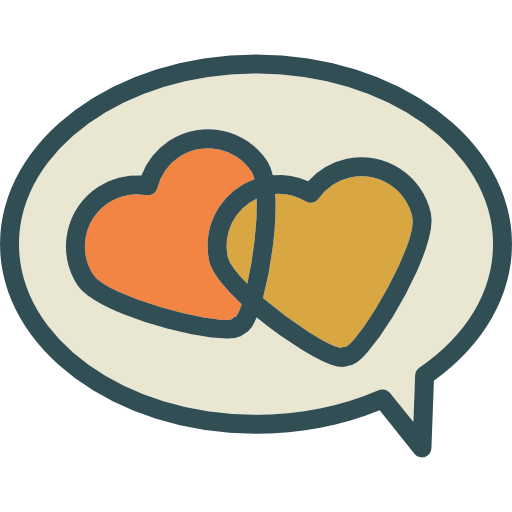 Learn more about the milestones of language development
Learn more about the milestones of language development
Bilingual Babies
There are many child brain development benefits to exposing your baby to more than one language during infancy and early childhood. Here are just a few:
- Improves cognitive skills
- Allows for effective communication with more people
- Delays the onset of dementia
- Provides a broader toolkit for exploring and expressing a diversity of thoughts and ideas
How Brain Development Affects Physical Capabilities
By now, hopefully it’s fairly clear how ubiquitous the brain is to so many parts of your child’s development. After all, it is the control center of your little one’s body. Here, we’ll talk a little bit about the brain science behind your baby’s ability to control and use their bodies.
Lots of muscle tone isn’t much use without a robust guidance system, which is why good brain development goes hand in hand with good physical development. Your brain expertly determines which muscles need to contract and which need to relax at what time in order to make your body move in the way you’d like it to. When your baby is born, they don’t yet have the ability to control their bodies the way you or I do, but they’ll start to take part in vigorous physical activity the moment they can do so.
Motor Skills
Neuromotor development, or the brain learning to use the body, comes in two flavors: gross motor skills, the ability to control large muscle groups, and fine motor skills, the ability to execute more fine-tuned movements. Gross motor skills will develop first and will allow your child to crawl, stand, and eventually learn to walk. Fine motor development will take longer to master, and involve learning to use motor activities and skills like the pincer grasp which will help your child manipulate objects.
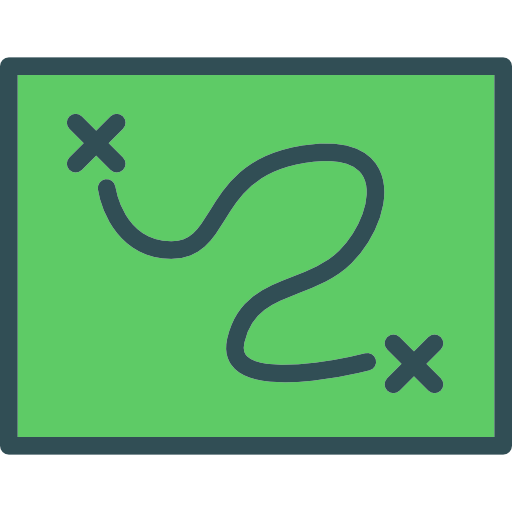 When is your baby ready to start walking?
When is your baby ready to start walking?
Hand-eye Coordination
Hand-eye coordination (sometimes referred to as eye-hand coordination) involves the brain’s use of information from the eyes in order to guide the hands, and what comes naturally to us in this department is incredibly hard for your developing baby. This sensory and motor skill will improve as the brain becomes faster at receiving and processing sensory input, and becomes more quick and skilled at moving the hands. This is a skill that can be improved with practice, even in adults.
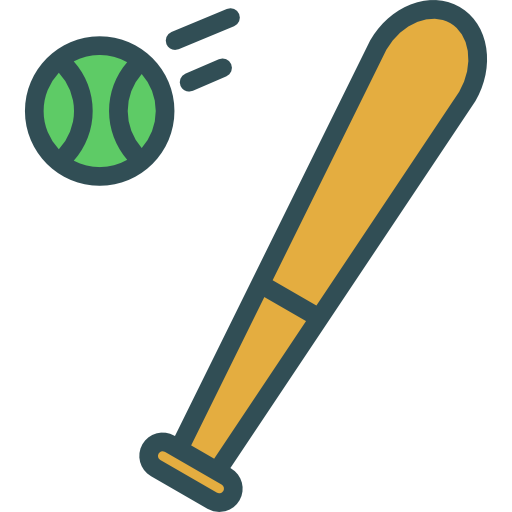 Teach your baby hand-eye coordination with these activities
Teach your baby hand-eye coordination with these activities
If you’re concerned about your child’s development of physical skills, your pediatrician can recommend a physical therapist or occupational therapist, depending on where the problem lies.
Traumatic Brain Injury – What If My Baby Hit His Head?
It’s always frightening when a child hits their head, but the good news is, most bumps are not that serious. There are many protective features of the body that protect the brain from injury (such as a hard skull, protective membranes called meninges, and the cerebrospinal fluid surrounding the brain and spinal cord). That being said, when your child takes a serious tumble, it’s always better to play it safe. Thoroughly check the child for injuries, monitor them closely for at least 24 hours, and if you’re still unsure, make an appointment with your pediatrician.
There are two kinds of injuries: external (damage to the scalp) and internal (damage to the skull, blood vessels inside the skull, and brain). While external injuries look scary, they are only surface-level, and therefore not that severe. Internal injury however can be very serious and require a trip to your doctor as well as careful supervision.
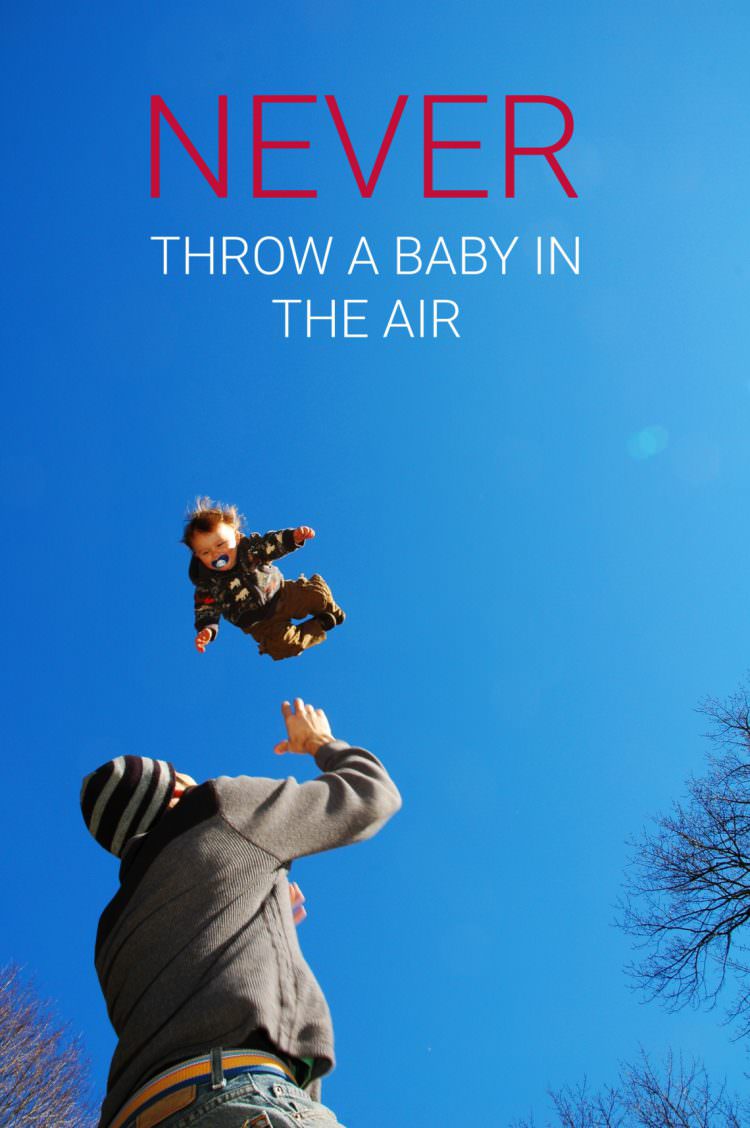
What About Concussions?
One of the most well known and most common internal brain injury is a concussion, and while it’s also the least serious of the internal brain injuries, it is still very serious. In the short term, it results in a temporary loss of normal brain function, but over time if multiple concussions are sustained they can lead to permanent brain damage.
Here are some signs to help you recognize a concussion:
- Bruises on his or her head
- Sleeps more or less than normal
- Cries in response to moving his or her head
- Cries excessively
- Irritability
- Vomiting
- Loss of interest in play
- Complains of a headache
- Exhibits unusual behavior
Bumps to the head are a normal part of your child’s path to independence, but careful childproofing (or sometimes called babyproofing) can help to prevent many of these.
Developmental Delay
The human brain is an infinitely complex organ and as such, there are many things that can go wrong during its development. The best indication of a brain related developmental delay is a failure to reach developmental milestones, so if you have concerns, bring them up with your doctor. There are a variety of professionals that help deal with these kinds of delays, from psychiatrists to speech-language pathologists, and if your child is experiencing a developmental delay your doctor can recommend the specialized help they need.
Learn more about Developmental Delays in Babies and Toddlers
Best Books About Baby and Toddler Brain Development
This article is just scratching the surface of what’s out there. While we’ve provided many great sources as links on this page, the following books will provide more thorough explanations and information regarding brain development in young children. If you’re interested in learning more, here are a few books we recommend.
The Magic Years: Understanding and Handling the Problems of Early Childhood
 By Selma H. Frailberg and T. Barry Brazelton
By Selma H. Frailberg and T. Barry Brazelton
This book takes you into the mind of a child and helps you better understand how they see things with their limited emotional and cognitive abilities.
Whole Brain Child: 12 Revolutionary Strategies to Nurture Your Child’s Developing Mind
 By Daniel J. Seigel and Tina Paine Bryson
By Daniel J. Seigel and Tina Paine Bryson
This book converts complex brain science to an actionable guide to help parents nurture their children’s developing brains.
The Emotional Life of the Toddler
 By Dr. Alicia F. Lieberman
By Dr. Alicia F. Lieberman
This book explores the emotional development of toddlers ages one to three, and helps parents determine how to deal with all of the intense emotions your little one will throw at you during this time.
NurtureShock: New Thinking About Children
 By Po Bronson and Ashley Merryman
By Po Bronson and Ashley Merryman
This book gets to the heart of what the science says about raising children and flies in the face of decades of conventional wisdom.
How to Talk so Kids will Listen and Listen so Kids Will Talk
 By Adele Faber and Elaine Mazlish
By Adele Faber and Elaine Mazlish
Who hasn’t asked this question before? A well-loved book that helps you learn how to communicate better with your children.
Mind in the Making: The Seven Essential Life Skills Every Child Needs
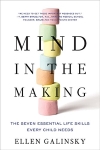 By Ellen Galinsky
By Ellen Galinsky
Galinsky is an authority on childhood learning, and has brought together new research to write a book about what skills your child will need as they grow.
Brain Rules for Baby (Updated and Expanded): How to Raise a Smart and Happy Child From Zero to Five
 By John Medina
By John Medina
Medina goes into the latest in baby brain science to answer some of your most pressing questions about how to teach children.
Einstein Never Used Flashcards: How Our Children Really Learn–and Why They Need to Play More and Memorize Less

By Roberta Michnick Golinkoff, Kathy Hersh-Pasek, and Diane EyerAll three authors are child psychologists that use scientific evidence to tell you why and how letting children learn through play is great for their development.
What’s Going On in There? How the Brain and Mind Develop in the First Five Years of Life
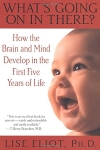 By Lise Elliot
By Lise Elliot
As a neuroscientist and a mother, Lise Elliot is intrigued by the development of the human brain and how her role as a mother fits into that development. This book explores those things.
The Scientist in the Crib: What Early Learning Tells Us About the Mind
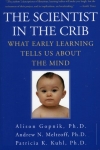 By Alison Gopnik, Andrew N. Meltzoff, and Patricia K. Kuhl
By Alison Gopnik, Andrew N. Meltzoff, and Patricia K. Kuhl
This book is much more science than it is parenting, but it offers some interesting insights into the way babies learn and grow.
Summary (TL;DR)
In conclusion, the brain development of children from 0-6 years is a complex process that we are constantly learning more about. Brain development in early childhood is extremely important as it sets the stage for the rest of your child’s life. The information we glean from the way the brain works in early childhood can help us better support our little one’s brain growth, and know what kinds of activities for babies are best at every age.
We at ADAM and Mila love to help parents like you uncover information about your baby’s early development, as well as inspire you with fun activities to aid in that development. If you found this guide helpful, please pass it along so that we can continue to help parents like you with questions about childhood. If we missed the mark, let us know in the comments what we can do better.
As always, these guides do not replace the advice of a medical professional, so if you have questions or concerns about your child’s development, consult your pediatrician.





This is a book not a blog post! ;-). I am a pediatric physical therapist so of course I drooled over every word of this post. So much great information! I have a blog everythingbabies.org if you’d like to collaborate! I will definitely be pinning and sharing your posts with my followers!
Hi Wendy, Yes i know it is a pretty long piece – took me three months to complete 🙂 Thanks for your kind offer to collaborate, for sure we can find some opportunity to work together. Our family is on holiday this week, but I will drop you a mail as soon as I can.
Wendy, you are on point. This is a book worth reading of course especially if you have a growing family like mine. I will take time to digest it and apply it.
Thank you Emil for taking the time to compile these researches and vital information in a blog.
Cheers.
John
Thanks John! And congratulations on the growing family 🙂
I AM DEEPLY APPRECIATIVE FOR YOUR COMPILATION OF DETAILED AND PRACTICAL INFORMATION ON EARLY DEVELOPMENT. THIS WILL BE AN INVALUABLE RESOURCE FOR THE MOTHERS AND BABIES I WORK WITH DAILY.
Thanks Sharon, very happy that you like it 🙂
This is a huge piece of writing! I’m saving it and sharing it. In my own reading and research, I’ve distilled the developmental needs into 5 broad areas and put them out as practical Tips in my small book, Simple Tips for Happy Kids. Children who develop well manifest their innate capacity to be joyful and share it. Just what our world needs more of. If you would like a copy, get in touch! Thank you!
I am teacher in preschool. I truly appreciate these learnings. Thank you.
Thanks Leonora! Really happy you like it!
Great compilation! I am a teacher and recently has become a mum… Could relate to most of d stuff here. You must have researched and experienced a lot. Thanks for such a detailed and useful article.
Congratulations Geeta, a wonderful thing to become a parent. I am sure being a teacher will help you as a parent, and perhaps later on being a parent will help you As a teacher as well.
Indeed it was a lot of work to research this article, I learned a lot in the process, totally worth it.
Fantastic- is this available as a pdf?
Thanks!
Hi Carolyn, it is not currently available as a .pdf, but that is a good idea, I will work on that.
I am very interested on this suject. I would like to go deeper though the research experiment results. Do you have any references which i could get into the detail?
Sure, which part are you particularly interested in diving deeper into?
You will find sources for everything we have written spread out through the article. I would encourage you to explore those links, and also the books mentioned at the end of the article.
Wish you good luck and happy researching 🙂
Hi My name is Tracy Trautner and work for Michigan State University Extension. I am writing a module on brain development and would like to be able to use the graphic about “How the Brain L earns” and “100 foods that boost brain development”. Can I use these graphics and other information in your blog for my training please?
Hi Tracy, absolutely! We appreciate people helping to share the knowledge we provide!
We appriciate even more if you would also provide attribution with a link back to this article so your readers can explore the whole content on their own.
Great Article!
I would like to know your opinion about the optimal time for a child to learn how to read. What about reading a second language with a different script? e.g. Chinese, English, Hebrew, Arabic etc
Hi Elchanan,
Short answer: Now is the perfect time!
It is unusual for a child to be able to do actual reading until around age 5 or so. However learning to read is a long process, and there are lots of steps on the way to full mastery – there are activities that you can play with your baby almost as soon as they are born, that will be beneficial for laying a strong foundation to later learn how to read. For a baby, I suggest to have a look at our section about cognitive development, and for a toddler, you can start working on general language development. More specifically here is a nice list of the stages of learning to read from birth to 13 years old: https://kidshealth.org/en/parents/milestones.html
As for a second language, there are numerous studies that show babies have amazing ability to absorb language during age 1-3 years old – if you have the opportunity to raise your child in a bilingual environment go for it! Although start with spoken language and follow the same progression of milestones as for the primary language. No point to try to teach your kid to remember 马 until he/she can already recognize a picture of a horse. You certainly can include letters and characters in play activities early on just to let your child feel familiar with the shapes – we have lots of such activities here: https://www.adam-mila.com/milestone/language-development/vocabulary/
who is the publisher of this article
That would be me, Emil Hauch Jensen, or you may credit ADAM & Mila as the publisher.
Great piece of writing. Thank you Emil for such a detailed glimpse of what is going on in an early child’s brain. It gives me valuable information to relate to parents as an EFL teacher on what to realistically expect from their child especially at the age of 3-5 year olds (most of my students’ audience).
Thanks Gino, very glad that you like it!
Extremely well researched and lucid article.
Great work Emil. Thank you for a lot of things from the article.
I am currently promoting benefits of right brain education in early childhood in India.
Your article is so much help.
please share more about right brain in early childhood if you come across something interesting.
thanks and regards:
Vaibhav Jain
Thanks Vaibhav, here is an excellent write up about fact and fiction as it relates to the two hemispheres https://www.medicalnewstoday.com/articles/321037.php
The creative right brain and logical left brain is more useful as a metaphor, should not be taken too literally. By right brain education are you talking about promoting creativity and social elements in education? Or how do you define right brain education?
Excellent work Emil, truly appreciate you sharing with us! Would like it to be available in pdf 🙂 I will have to read it again in detail since I do have a few queries.
Great article (book!), very practical and written for the ‘lay-man’. Thanks! Can you point me to anything that you have found to be useful and ‘on point’ to do with the development of mathematical concepts in the brain of primary and adolescent students. Appreciate the massive time it has taken for you to research and write up this piece.
Thanks Andrea!
My research has really been focused on young children, I don’t have much knowledge of what happens later. What I can say is that the foundations of math are basic cognitive skills such as sorting and matching, recognizing colors and shapes. To an extent also logic skills such as creative problem-solving.
This makes sense when you think about our brains as being excellent at recognizing patterns, but not really great at numbers, at least not compared to a 10$ calculator with less sophisticated intelligence than a snail. We need those underlying logic skills in order to teach our brains to understand numbers and math.
I would guess then that using colors, shapes and such would help our brains to better relate to the math concepts even for adolescents. For instance, there are many riddles that can be solved as equations – presenting an equation as a riddle might help the brain connect the dots and develop the patterns it needs to learn algebra.
Just a hunch, I haven’t done the research, sorry.
I would love to reference this as a source for a paper I am writing. Who is the author? Thanks in advance!
Hi Jos, I’m the author (Emil Hauch Jensen). Thanks for helping to spread the knowledge!
This is excellent! I am an early childhood educator and this was just beautiful. How can I share this with parents?
Any way you like!
There are some sharing buttons in the bottom of the page. If you decide to copy the text I would appreciate if you include a link back to this page.
Glad you found it useful!
Very informative post. Well done on writing such a difficult topic in a way that is easy to understand. It makes these important facts available to all parents. I would enjoy reading an about you page, did I miss the link somewhere?
Thanks Estie!
I like your HealthyFamilyandMe.com blog too!
Our About us page is here: https://www.adam-mila.com/about-adam-mila/ although I admit it is not very informative. Just drop me a mail if you want to get in touch!
Insightful indeed! I’m a mom of two daughters. Both of them are below 6 years, and this sounds like the most powerful piece on parenting I’ve read in a while.
Sharing on my social right away!
Thanks Olivia, those are humbling words – really appreciated!
Excellent article and resources. I’m a Montessori teacher educator and have been curious about the science behind learning for years and how we as educators harness research-based instructional strategies in our practices. Recently I’ve been delving into neuromyths and came across well-established research about the brain that refutes the idea of “critical periods” – the brain’s elasticity continues throughout our development (although it’s not limitless and elasticity does slow down as we age) which means it’s not impossible to learn certain things, it’s just not as easy as it is during a “sensitive period”. May be a small nuance, yet this has huge implications in education. Thanks again for the article!
Thanks Tammy!
I fully agree. As you have probably found in your own research our understanding of the brain has improved dramatically in recent years – I would personally take any ideas that are more than twenty years old with a grain of salt.
It is technically correct that the growth of new neurons (cells) slows down with age, and in your thirties, it will be “just a trickle of new neurons in the hippocampus region” (and even that might not be true according to this very recent study: http://theconversation.com/adult-human-brains-dont-grow-new-neurons-in-hippocampus-contrary-to-prevailing-view-93123 )
The problem is that “cell growth” should not be made equal to “learning”. By far the wast majority of new cells arrive before you are even ten years old, and a great deal of those during just the first year (and the nine months prior).
Obviously, humans continue to learn new things even after their brains stop growing. Our brains continue to develop new connections (synapses) between the existing neurons, and we even learn/adapt by removing (pruning) connections.
It is of course also true that the sponge brain of a toddler learns at an amazing speed, hence the sensitive periods. But I would never agree with someone who claims he/she is too old to learn.
What a lovely article. I am a Speech-Language Pathologist in south African and this page is just so user friendly I am going share your link with may of the parents I see especially for EI. I simply loved it!
That is wonderful to hear! Thank you Audrey 🙂
This is very insightful, especially for me, I have a foster child and have heard most of these things before, but it’s good to be refreshed. A child from a bad place has his/her brain wired for survival and fight/flight/freeze and to overcome that and build a relationship with that child can be very challenging. We have to “re-wire” the brain to build trust and help the child form normal relationships. Thank you.
It is a great article. I would like to use it for my assignment. Can I know when did you publish this article( need it for referencing)?
It’s a bit old, it was published on March 15th 2017.
Wonderful article!!! I teach Head Start and see how low some children can be due to lack of exposure to proper models of behavior. I shared this with my families. Thank you!!
Many Thanks for sharing. Had a very good read. This article is very helpful especially to those who needs very good advise. Thank you!
Hey! What a great read. I am an executive working at a children’s brain development program can brainy. I have totally experienced all the things you have mentioned and the course works towards improving the same. Thanks for this amazing write up! You can check out the brain development program I’m talking about it goes by the name Brainy.
Hi Emil, could I use certain parts of this beautifully written article to show parents in my neighbourhood, to pay more attention to what the school system is doing to their children? I sent a request for help on your ask an expert site earlier tonight…
thank you, this is what I have been looking for 6 years ago…
Dear team,
Thanks a lot for the valuable information. We would like to share these data in our nursery and we will be definitely mentioning the copyright to Adam & Mila. is that alright? please confirm and thanks in advance.
Of course
Good job! I truly appreciate your effort ,it was mind blowing to see things from a teacher and parent perspective.
I must say this a very beautiful write up. I was glued to the screen all through trying to digest all the information. As a someone who wants to study more about children’s brain and development, I really enjoyed reading this write up and this has given me more urge to pursue my passion in this area. Thanks for sharing your knowledge!
This is really great content.
Thank you for shairing.
Thanks for sharing the significant information. It helped me and will help others a lot. Nice.. …
It helps me to improve my teaching skills
Best for teaching and very informative
What an incredible and concise wealth of information! As a parent with an almost-3-year-old, I’m so glad to have found this article and excited to dive into the resources listed at the end. Thank you!
Thanks,very informative
Thanks,very informative and helpful
Great contribution
So nice
Hi, this is a great article indeed, thank you !
I am a grandmother, every word is valuable and important, I passed it to my children to guide them with their new born. I love it a lot.
Hi !
This is amazing ! Thank you for sharing your knowledge, I will also like to share this to my early childhood educators 🙂
I am also a early childhood teacher.great information thanks
how to cite this article ?Can I have more information about it.
Good work with detailed description. I want to cite this work and add the reference in my bibliography.
Hi Saima, you are welcome to cite it any way you like, a link would be ideal.
Loved it! Very well condensed and love the book recommendations. This is a great reading and will share.
Thank you!
A five star article on brain development of a child since one is inside the womb.
I enjoyed every bit of information. It’s detailed and in-depth.
A great piece of content!
I write on parenting.
Recently I wrote an article: Turn 11 Factors Affecting Growth And Development Into Benefit Of A Child
Here’s the link: https://growsmartkidz.com/factors-affecting-growth-and-development/
Let me know if it is useful for your audience.